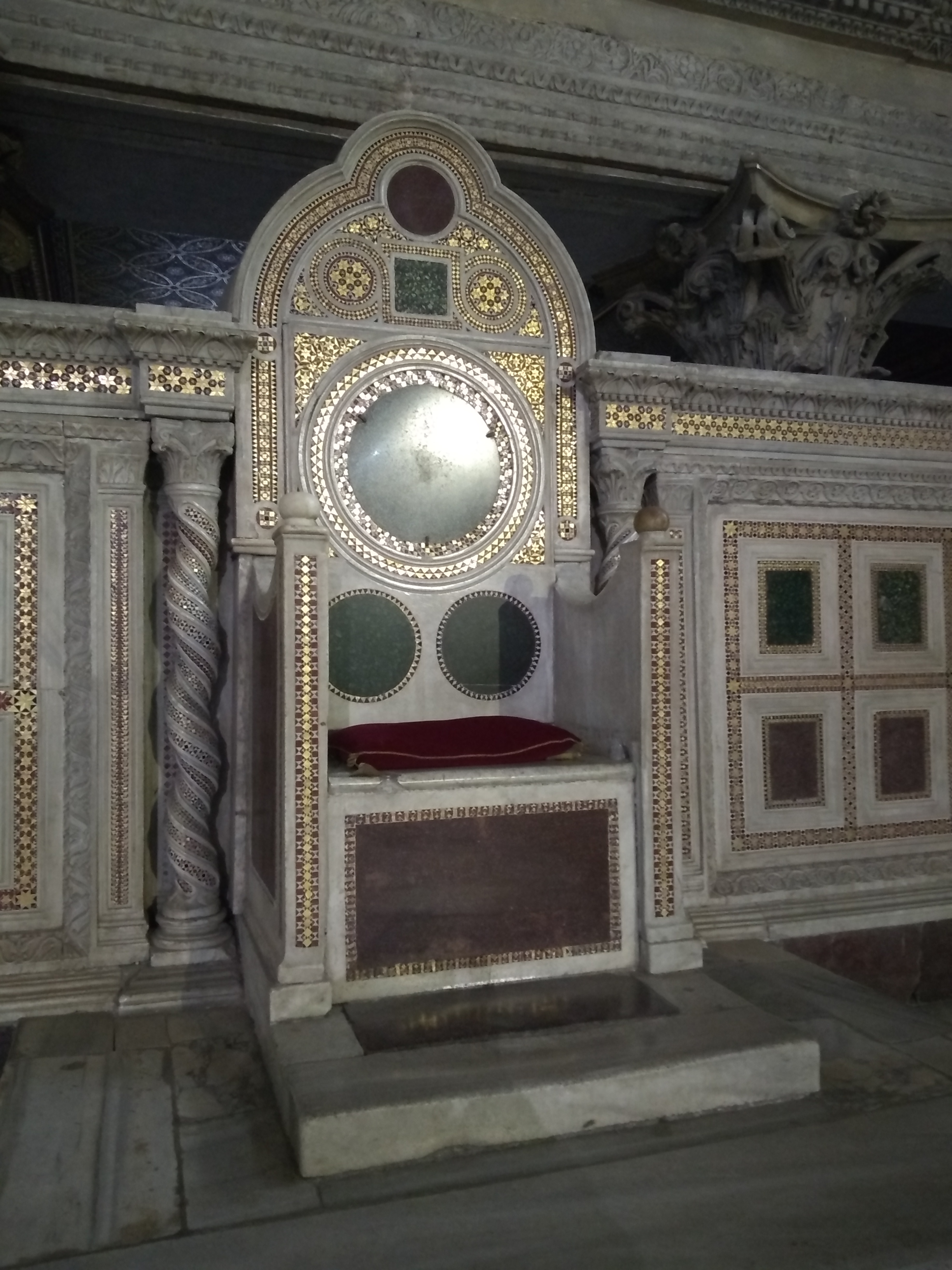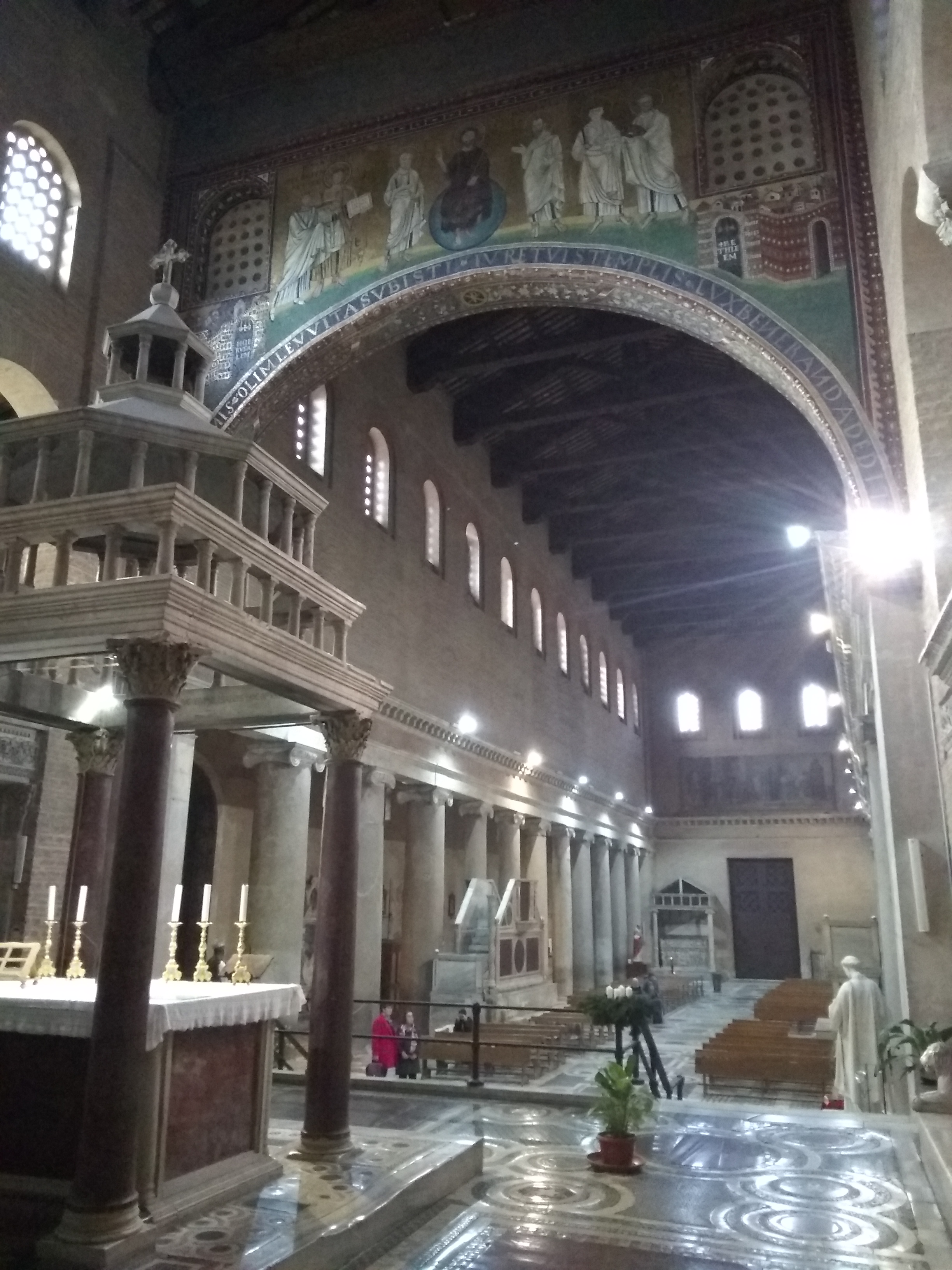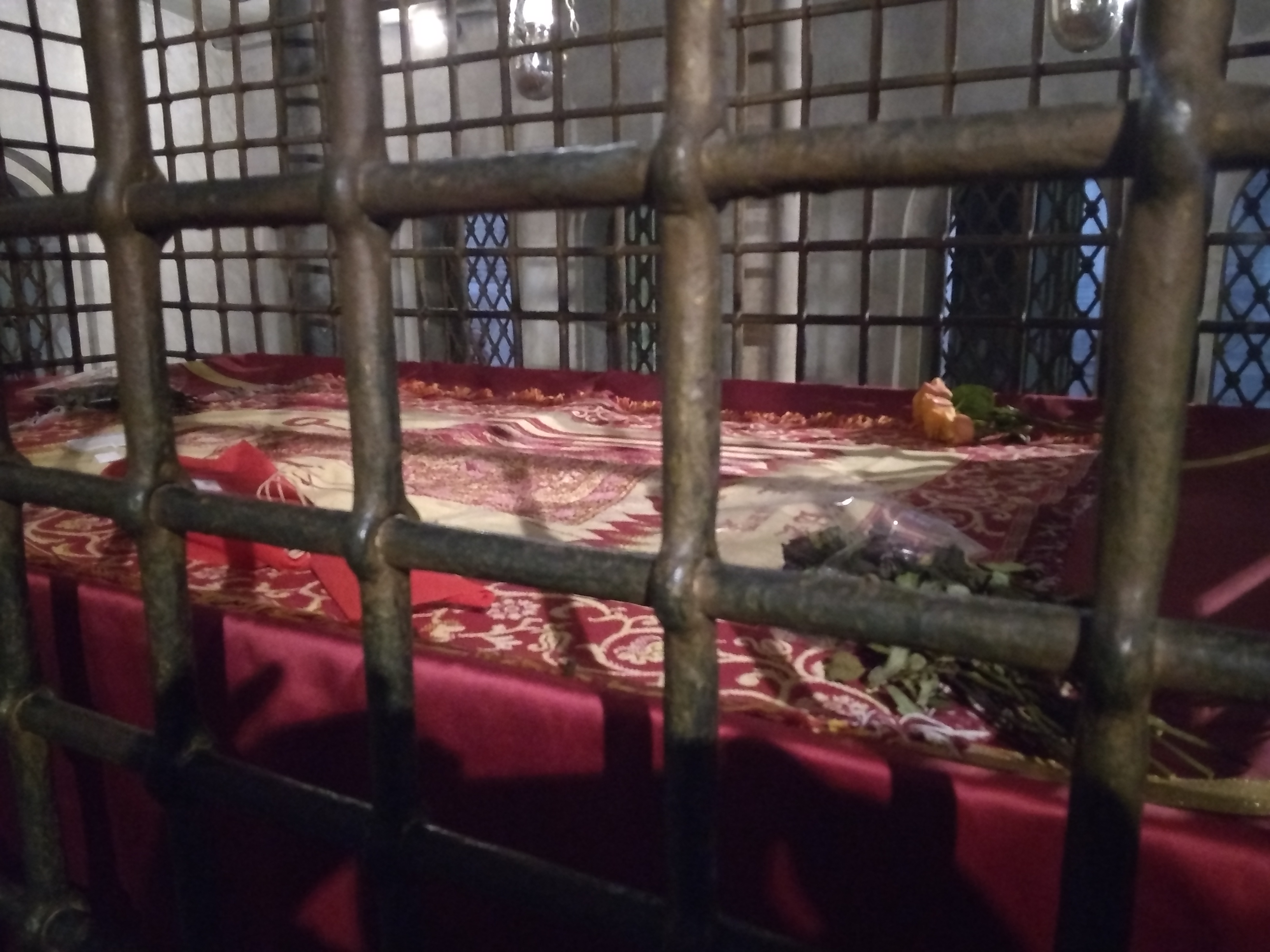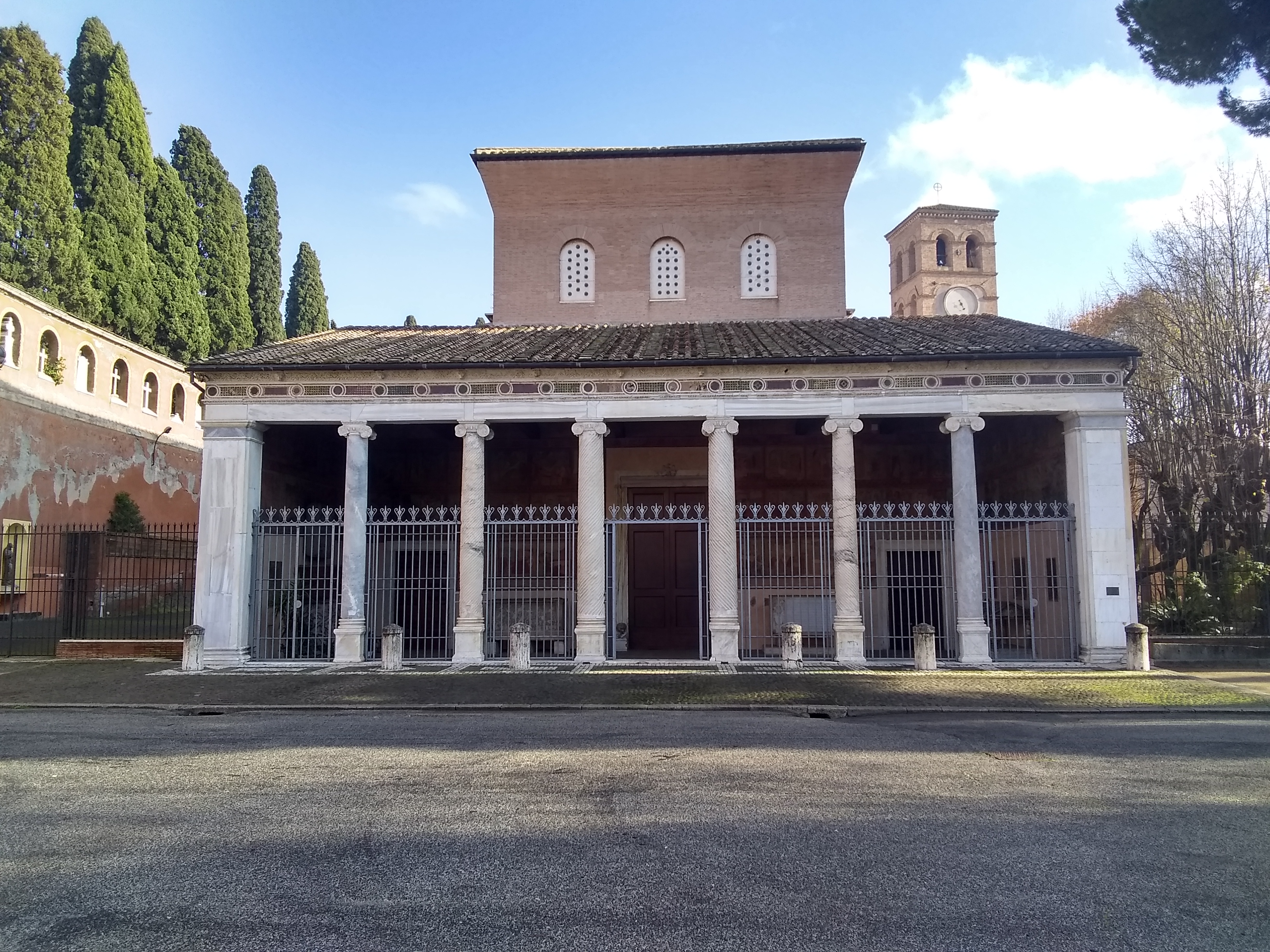
The most humble of the Seven Basilicas of Rome, which were the traditional places of pilgrimage during the Holy Years, is the Basilica of Saint Lawrence Outside the Walls. The Basilica is named after the famous Saint Martyr of the Early Church, who was the Arch Deacon of the Church of Rome entrusted with the funds for all the poor and widows in the City who received aide from the Church.
Saint Lawrence is the principal Patron Saint of all Deacons.
Saint Lawrence was martyred in 258 A. D., when he in response to the Roman Official who wanted to seize the treasures of the Church, being demanded to produce them for confiscation, Saint Lawrence called together the poor whom he cared for and said, “Behold the treasures of the Church!”
Saint Lawrence was put to death on a griddle, and when his flesh was roasted on one side, he said to his executioners, “I am done on this side, you can turn me over now!”
The Emperor Constantine build the first Basilica over the small Oratory which enclosed the tomb of the Saint in 258 A. D.. And YES indeed, this Basilica still holds its treasure! The tomb of the Saint!

The Nave of St. Lawrence’s Basilica preserves the traditional form an structure of a late Classical basilica, which was a Roman Law court. As these buildings became places for official imperial business, they were modified to have a raised dias at the end, where the official or Emperor would sit when holding court. Since it was cheaper to simply take an unused basilica and turn it into a Church, the form of the Roman basilica became the standard form of the Catholic Basilica for the next 1000 years, giving rise to the Romanesque Style of Architecture in Churches.
The Basilica therefore has a central large section flanked by columns, and at the apex of the Nave, a raised Sanctuary. Here you can see that beneath the Sanctuary, the lamps burning in the tomb of the Saint.
The floors of the Basilica preserve the mosaic like patters which were commonly used in the early Middle Ages. Large parts of the walls were rebuilt after World War II, because in their sloppiness, the Allies let a few bombs fall in the Verano Cemetery to the rear of the Church, which destroyed parts of this Church.

There are 2 great treasures in this Basilica, after Our Lord in the Blessed Sacrament: The first is this magnificent Statue in white marble of Saint Lawrence, holding the griddle upon which he was burnt alive for the love of Jesus Christ. In this left hand, is a treasury box representing his duty to care for the funds of the Church of Rome.
In my judgement, this is one of the finest works of art in all of Christendom, because it succeeds in capturing both the nobility and the innocence of the Saint, without any of the exaggerations which came to be common in the Renaissance or Early Counter-Reformation. This is Christian Art the way it might have looked at the end of the Classical Period, when artists were mortified and men of prayer and spirituality.

Here is a close up. The Saint is wearing the traditional dalmatic of a Deacon, as they were made in the late Classical period. The Latin inscription on the box is from the Office of Saint Lawrence: Dispersit, dedit pauperibus. “He gave away, He gave to the poor”.
Notice the Cross on the Dalmatic, indicating that the Saint was consecrated to Christ heart and soul. The haircut is in the style of the Latin classical period, and the Saint is beardless because the tradition of the Roman Church has ever been for the clergy to shave the face.

The Sanctuary is formed by a raised platform which is accessed on each side by a stair Case. At the center is the High Altar, covered by a Baldichino. This one has plenty of holes in the roof, because in the late classical period, oil lamps were used to light the altar, and they required ventilation. Directly beneath the High Altar is the Tomb of the Saint.

One can see from the structure of the Altar, that the Priest or Bishop who celebrated here, has a tight space. But this Altar has a step of wood placed on the side used to celebrate, to keep the feet of the priest warm in the winter.

At the Apex of the Nave and Sanctuary is the Papal Throne, in Classical Imperial Style, with plenty of space for the Papal Court to stand and approach. This Throne is a good 50 feet from the High Altar, which means it was probably set there to accommodate a good number of the Clergy of the City during liturgies.
Here is a close up:

So you can see, having the “presider’s chair” on the central axis is quite an aberration. Only the Pope should sit in that place, because He is the Vicar of the Living God. The parish priest or Bishop should have a little humility and remember this.

Let’s now make our way to the Crypt, which is the goal of every pilgrim!

The Crypt consists of a huge marble sarcophagus enclosed in Iron Bars. This is the very tomb of the Saint, who has lain here for 18 centuries. The Bars were to keep pilgrims from stealing parts of the tomb.

The Tomb is covered in a Red Tapestry depicting Saint Lawrence. Red is because he shed his blood for Christ!
And if you stick your hand through the bars, you can take a photo of the Icon of the Saint, which sits at the head of his resting place.

This icon is modern and in the Greek Style.
Here is a prayer for Deacons, who come here on Pilgrimage:
O GLORIOUS SAINT LAWRENCE,
who in your duties as a Deacon kept ever in mind,
first and foremost,
that love of Christ’s poor was the principal and essential duty of every Deacon:
deign we beg you, to obtain for us the grace
to open our hearts to those who are truly poor,
and the prudence to distribute the alms of the faithful,
wisely and mercifully to those in need. Amen.
______
CREDITS: These photos are by Br. Bugnolo who releases them to the public domain so that Catholics everywhere can see the glories of their Faith, even if they cannot come to the Eternal City to see them in person.


I see that Bp Arrieta is in the news, but I can’t tell what his article about the ‘Papal Secret’ means. There is so much parsing of words that seems to get in the way of “yes being yes and no being no”. Thank you for being clear with your own words.
https://zenit.org/articles/contribution-of-h-e-msgr-juan-ignacio-arrieta-secretary-of-pontifical-council-for-legislative-texts-on-rescript-of-pope-francis-on-confidentiality-of-legal-proceedings/
Bergoglio knows his has riled up opposition by his idolatry and so he is trying to dump as much overboard before his ship sinks. Cancelling the Pontifical Secret is basically throwing allt he Bishops to the dogs because it was the Vatican who told the Bishops to keep these things secret. We will see that the Bishops of Rome since Pius XII and before Benedict were all complicit in the coverup, and are in no way worthy of the honors of the Altar. Also, that abolishing the Holy Office was an act of institutional insanity.
It was Paul VI, but Ratzinger pushed for it and lauded the decision. To your second question, yes emphatically. If there is one good thing today, it is that Our Lord through His civil courts is going after the creeps who infest His sanctuaries.